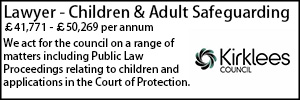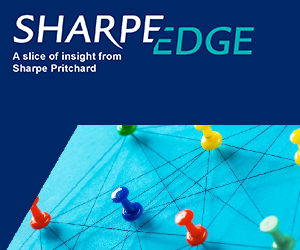Children law update: Summer 2025
Michael Jones KC analyses the latest public law children rulings of interest to practitioners.
- Details
As summer holidays rapidly approach, it falls upon me to provide some holiday reading material in the form of my standard case law update (obviously this is exactly what members of the bar and solicitors want to take away as pool side leisure reading).
On a serious note thought, this update does contain a number of important judgments which are essential reading for any practitioner working in the area of family law. I am going to start with the Court of Appeal judgment in M (A Child: Intermediaries) [2025] EWCA Civ 440 which relates to, you guessed it, intermediaries. The lead judgment is from Peter Jackson LJ and provides definitive guidance as to how the issue of intermediary appointment should be dealt with by the Family Court: interestingly, the guidance is not in line with that previously provided by Lieven J in West Northamptonshire Council v KA & Ors [2024] EWHC 79 (Fam), which you may recall I dealt with in a previous update.
In particular, Lieven J relied on extensive citation from a criminal case, R v Thomas (Dean), however in this respect, PJLJ commented as follows:
‘I do not consider the decision in Thomas to be an aid to the interpretation of Part 3A of the FPR. Part 3A was the product of the Vulnerable Witness and Children Working Group, whose final report in February 2015 heralded a greater awareness of the needs of vulnerable persons in family proceedings. The guidance in Thomas drew on the 2015 Criminal Practice Direction, which provided at 3F.13 that directions to appoint an intermediary for a defendant's evidence will be rare and, for the entire trial, extremely rare. These references did not appear in the Criminal Procedure Rules 2020, nor in the current 2023 Criminal Practice Direction, which addresses intermediaries at 6.2.
There is in any event no warrant for overlaying the test of necessity with concepts of rarity or exceptionality. Frequency is not a test, and nor is exceptionality. Similarly, the introduction of tests of "compelling reasons", or of adjournments for lack of an intermediary being "unusual" or "very unusual", beckon the court to short-circuit its consideration of the evidence in the individual case.’
Again, referring to the judgment of Williams J in Re X & Y, (Intermediary: Practice and Procedure) [2024] EWHC 906 (Fam), PJLJ stated that:
‘These projections, including references to "very rare" or "rare" cases, are not a substitute for a straightforward application of the rules.’
Following on from this, PJLJ referred to the practice guidance issued by the President in January 2025:
‘I finally turn to the Practice Guidance: The Use of Intermediaries, Lay Advocates and Cognitive Assessments in the Family Court, issued by the President of the Family Division on 23 January 2025, a week after the decision in the present case.
Paragraphs 16 and 17 contain valuable guidance about cognitive assessments, reflected at paragraph 26 above.
Paragraphs 3 to 15 relate to the appointment of intermediaries. Specific reference is made to the main High Court decisions considered above and the guidance follows those decisions. The reservations that I have expressed above apply to paragraphs 10 and 12, which are framed with reference to rarity.
Any perception on the part of the senior family judges that intermediaries are being appointed too freely must be treated seriously. But as a matter of law the solution lies in the effective application of the necessity test found in the FPR, a test that the court has routinely applied to the appointment of experts in family proceedings since 2014.’
So the situation regarding the appointment of intermediaries is now clear: the Court must not introduce a heightened test relating to rarity, compelling reasons etc, rather it must consider whether the appointment of an intermediary is necessary in line with the applicable legal framework, namely that set out within FPR 2010 Part 3A relating to vulnerable persons and intermediaries. In relation to the rules, the full legal framework is set out in detail within the judgment, however, the key elements of the judgment relating to vulnerability appear at paragraph 14-16:
‘Part 3A and Practice Direction 3AA provide the court with a framework. That is an aid to, and not a substitute for, the court's own judgement about whether a person is to be regarded as vulnerable and, if so, what measures may be needed to achieve procedural fairness. Some aspects of the provisions concern children, victims of abuse, or protected parties who lack mental capacity. On this appeal, we are not directly concerned with these classes of individual, but the underlying principles are the same.
The court's duty to identify any party or witness who is a vulnerable person begins at the earliest possible stage of the proceedings and continues until their resolution – FPR rule 3A.9(1) and PD3AA paragraph 1.3. All parties and their representatives must work with the court and each other to ensure that each vulnerable party and witness can participate in the proceedings and give evidence without being put in fear or distress: PD3AA paragraphs 1.4 and 3.1.
In a case where it is relevant, the court will ask itself these questions:
(1) Is a party or a witness a vulnerable person, having regard to the matters set out in FPR rule 3A.7 and the practice direction? – FPR rule 3A.3.
(2) If so, is the party's participation in the proceedings (other than by way of giving evidence) likely to be diminished by reason of vulnerability and, if so, is it necessary in order to achieve a fair hearing to make one or more participation directions? – FPR rules 3A.4 and 3A.7 and PD3AA paragraph 1.2.
(3) Is it likely that the quality of evidence given by a party or witness will be diminished by reason of vulnerability and, if so, is it necessary in order to achieve a fair hearing to make one or more participation directions, as determined at a ground rules hearing? – FPR rules 3A.5 and 3A.7 and PD3AA paragraphs 1.2 and 5.2.’
Regarding the rules relating to intermediaries, at paragraphs 21-30 His Lordship stated the following:
‘Intermediaries are communication specialists. In family proceedings, their function is to communicate and explain questions asked of vulnerable people or answers given by them – FPR rule 3A.1.
Where the court has found that a person is vulnerable and that their participation and/or quality of evidence is likely to be diminished as a result, it comes to what is likely to be the critical question, namely whether it is necessary to approve the appointment of an intermediary in order to achieve a fair hearing, as opposed to making some other form of participation direction.
Intermediaries are not expert witnesses, and are not appointed under Part 25 of the FPR. However, the decision about whether an individual should have an intermediary is an important matter, and the court should approach it with formality. FPR rule 3A.10 supposes that an application will be made in the document that originates the proceedings or by a later Part 18 application. The application must explain what measures are sought and why each of them would be likely to improve participation or the quality of evidence – FPR rule 3A.10 and PD3AA paragraph 6. If the court exercises its power to dispense with the filing of a formal application, it should ensure that it has this information by other means.
If an intermediary assessment is granted, and the recommendation is for intermediary assistance, it should again be made clear what actual order is being sought. In particular, there should be clarity about what hearings or parts of hearings an intermediary would attend, and whether it is suggested that an intermediary is required for other legal meetings inside or outside the court building. The provision of a draft order will assist. Breaking matters down in this way reduces the risk of unsound 'all or nothing' orders being made. The court will no doubt seek to avoid making repetitive orders, but may give directions that last for certain hearings only, and revisit and revise directions in the light of experience.
The rules and practice direction show that (as with other participation directions) the primary focus of an intermediary appointment is to assist with communication within the courtroom, and in particular to enable the vulnerable person to give their best evidence. However, as seen from FPR rules 3A.1 and 3A.4, PD3AA paragraph 3.1, participation directions are not limited to these functions. The last of these provisions requires that, when considering whether the participation of any party or witness in the case is likely to be diminished by reason of vulnerability, the court should consider the ability of the party or witness to
"a) understand the proceedings, and their role in them, when in court;
b) put their views to the court;
c) instruct their representative/s before, during and after the hearing; and
d) attend the hearing without significant distress."
Moreover, a party's 'participation in proceedings' includes giving instructions and making written statements, a process that requires questions and answers. The witness statement of a witness called to give oral evidence will stand as their evidence in chief unless the court directs otherwise – FPR rule 22.6(2). Under FPR rule 3A.5, the court must consider whether the 'quality of evidence' given by a party or witness is likely to be diminished by reason of vulnerability: this cannot sensibly be limited to oral evidence. There may therefore be circumstances in which an order for intermediary assistance will be sought for a legal conference away from court, but this will call for a separate exercise of judgement. The fact that participation in proceedings extends beyond the courtroom does not absolve the court from considering whether an intermediary is in fact necessary for that purpose in the individual case. As noted above, the experience of a vulnerable person in a solicitor's office, where matters can proceed at their own pace, is likely to be different from their experience of a more formal courtroom setting, and what is necessary in one setting may be unnecessary in the other.
In making its judgement about vulnerability and participation directions, the court must have regard in particular to the matters listed in FPR rule 3A.7 when deciding what is necessary in the case before it. There will often be a cognitive assessment. If it recommends the use of an intermediary, it must evidence why that is necessary and explain why alternative means are inadequate. It would be helpful for the report to consider the party's participation at case management hearings, legal conferences, and when giving evidence. If the court then approves an intermediary assessment, the cognitive report should be supplied to the assessor. The intermediary assessment itself will then form part of the evidential picture in relation to vulnerability and measures.
The court is also entitled to take account of the parties' submissions, to whatever extent it considers appropriate. Advocates are expected to have the skill to identify and adapt to vulnerability, and their submissions on the measures needed to ensure a fair trial form part of the information on which the court can act. The advocate representing a vulnerable person or seeking to call them as a witness may be well placed to assist the court from their own interactions with the vulnerable person, but it would be inappropriate to require evidence from them in the form of a witness statement. As the process is a collaborative one – PD3AA paragraphs 1.4 and 3.1 – the court may also benefit from submissions made by other parties, who may also have their own interest in the decision. The local authority and Children's Guardian will wish to ensure that the proceedings rest on firm foundations and, depending on the case, individual parties may have their own perspectives.
Decision-making about intermediaries should not be protracted, and the court's conclusions should be capable of being expressed quite shortly.
We did not hear detailed submissions about funding for intermediaries. At page 15 of the Family Justice Council Guidance (above), it is said that HMCTS will fund the attendance of the intermediary, at least during attendance at court, and that the Legal Aid Agency, subject to merit and prior authority, may fund an intermediary to cover meetings between a party and their representative outside of court attendance. That would broadly reflect the position in relation to interpreters, but fuller consideration of this issue is beyond the scope of this judgment.
By applying the principles set out above, the Family Court will discharge its duty to ensure procedural fairness in cases involving vulnerable persons, and its duty to save expense. Intermediaries will be appointed when and to the extent that they are necessary, and not otherwise.’
The next important judgment of note comes from the President in Re K & Re S (Legal Aid: Experts' Fees) [2025] EWFC 100. This judgment relates to the issue of prior authority from the LAA in cases where experts’ fees exceed those permitted by the LAA. The President succinctly summarised the statutory legal aid scheme as follows:
‘The prescribed remuneration levels for different types of experts are set out in the Civil Legal Aid (Remuneration) Regulations 2013 (the "Remuneration Regulations"). Regulation 10 obliges the Lord Chancellor to "pay remuneration to a provider in relation to services incurred as a disbursement by the provider in accordance with (a) the relevant contract; and (b) the provisions of Schedule 5". A table at Schedule 5, paragraph 1 details the prescribed remuneration levels which the Lord Chancellor must pay.
Schedule 5, paragraph 2 of the Remuneration Regulations makes provision for higher rates to be paid to experts in exceptional circumstances. In particular, it provides as follows:
"(1) The Lord Chancellor may increase the fixed fees or rates set out in the Table after paragraph 1 if the Lord Chancellor considers it reasonable to do so due to exceptional circumstances.
(2) In sub-paragraph (1), "exceptional circumstances" mean that the expert's evidence is key to the client's case and either –
(a) the complexity of the material is such that an expert with a high level of seniority is required; or
(b) the material is of such a specialised and unusual nature that only very few experts are available to provide the necessary evidence."
Where it is proposed to instruct an expert whose fees exceed the statutory rates, legally aided parties may apply to the LAA for 'prior authority' to incur the additional expense. In addition, Ms Emma Mockford, counsel for the LAA, told the court that in principle it is open to a party to seek to obtain authority for additional expense after the event. There is no right of appeal against a decision made by the LAA to refuse, or only partially allow, authority for additional expenditure above the standard rates. That that was the position in law was accepted by Sir Nicholas Wall P in Re DS (Children) [2012] 1 WLR 3098.
The Remuneration Regulations are applied by the LAA in accordance with 'Guidance of the Remuneration of Expert Witnesses in Family Cases' ['the Remuneration Guidance'], which is non-statutory guidance, first issued by the Ministry of Justice in April 2013. It has been regularly reviewed and updated and, in September 2020, Annex 5 was added. Annex 5 identified five categories of expert where it was recognised that there was a shortage and higher rates were routinely allowed. In cases to which Annex 5 applies, there is no need for prior authority for fees that are within the higher rates set out in the annex.
Paragraph 2.3 of the Remuneration Guidance makes clear that when the LAA is deciding whether to approve rates for experts that are still higher than those in Annex 5 to the Remuneration Guidance "the LAA will consider, in addition to the [exceptional circumstances] criteria above, the total costs of the work sought, the speed at which the work must be completed, any identified shortage of experts and any other exceptional reason".’
The concern voiced by local authorities is the expectation that they will ‘pick up the tab’ and meet the shortfall of expert fees in cases where prior authority is not granted. It is of note that, as the President identified, the LAA has now amended its ‘Guidance on the Remuneration of Expert Witnesses in Family Cases’ so that it makes clear that it is not the intention of the LAA that local authorities should make up a shortfall in expert fees (other than in unusual circumstances).
The President also noted that the revised guidance issued in April 2025 makes clear what criteria (exceptional circumstances) are to be met for the LAA to grant prior authority to instruct an expert where the fees or hours exceed those set out in the Remuneration Regulations or Guidance [para 2.2 and 2.3]:
'2.2. In order to be granted prior authority for fees or rates higher than those listed in the Remuneration Regulations, you will need to demonstrate that the instruction of the expert involves exceptional circumstances. Exceptional circumstances are defined in paragraph 2(2) of Schedule 5 of the Regulations and are where the expert's evidence is key to the client's case and either:
a) the complexity of the material is such that an expert with a high level of seniority is required; or
b) the material is of such a specialised and unusual nature that only very few experts are available to provide the necessary evidence.
2.3. Scarcity can be demonstrated by providing alternative quotes or evidence of attempts to secure alternative quotes. Complexity can be demonstrated by providing a background to the case, either within the Letter of Instruction, or as a separate document. The detail may also be set out in the court order or provided by the expert in the breakdown of their estimate. When making a decision on whether exceptional circumstances are met and higher rates should be approved, the LAA will consider, in addition to the criteria above, the total costs of the work sought, the speed at which the work has to be completed, any identified shortage of experts available at all or within the timeframes required and any other exceptional reason.'
The President concluded that:
‘Where there is a likely shortfall, then the general principles identified by the experts' group are aimed at ensuring that the LAA has been provided with full information, that the internal LAA procedures (including any review) have been followed and the possibility of challenge by judicial review has been given reasonable consideration. Only then, when the court is satisfied that these other reasonable steps have been properly taken, should it turn towards the local authority as a possible source of additional funding…..
…..Where any process of review may take time, and postpone the chosen expert starting work, a court should consider arranging (either by agreement or court order) for the local authority to cover any shortfall on an interim basis pending further consideration by the court once the LAA process, and any challenge, has run its course. In line with the express wording of paragraph 2.4 of the revised Guidance, the fact that the local authority may be covering the shortfall in the interim is not a relevant factor for the LAA when considering an application for prior authority.’
So in cases where the LAA takes its time (which may be the situation in numerous cases) it will likely fall to the local authority to meet the shortfall pending the completion of the LAA decision making process. The President set out the provisions of the wording of order to be used in the instruction of an expert where their fees exceed the LAA rates/hours, whilst in terms of general principles, the President made the following observations:
‘Having considered the issues involved, the experts' group has endorsed the list of general principles proposed by Barnet and they are in the following terms:
'i. Those seeking to instruct an expert should make all efforts to identify an expert with the requisite experience and expertise who works within the prescribed rates and the prescribed number of hours and can report within an acceptable timeframe.
ii. If such an expert can be identified then that expert should be preferred by the court absent any exceptional reason.
iii. A local authority should not routinely be considered as a source of funds to make good any shortfall in the instruction of an expert.
iv. A local authority should only be ordered to pay for the shortfall of an expert where the court is satisfied:
a. That there has been proper exploration of other experts who may be able to complete the work within the prescribed rates and for the prescribed number of hours.
b. That the application for prior authority that has been considered by the Legal Aid Agency has been argued fully and included all material relevant to the decision making of the Legal Aid Agency.
c. That the parties (including the Local Authority) have given proper consideration to the possibility of a claim for judicial review against the Legal Aid Agency.
d. That the reason given by the Legal Aid Agency for refusing to approve the application for prior authority was full and enabled the court and the parties to understand the reason for refusal.'
The next case for me is a big one for me. I can recall cases where, as a junior, a court has made s.37 directions in relation to non-subject children. Turns out that I may have missed a trick in not appealing that decision….. This was the issue in Re E (Section 37 Direction) [2025] EWCA Civ 470, where the judge at first instance made a s.37 direction in relation to children who were not subject to the proceedings before him. The local authority appealed and the appeal was allowed. Baker LJ sets out a comprehensive summary of the relevant statutory provisions, rules and case law relating to s.37 however his ultimate decision is encapsulated in the following extract from the judgment:
‘I fully share the judge's concerns about these three young children. The reports in the social worker's initial statement about conditions at A's house were very alarming and it was entirely understandable that he asked to be updated at the hearing on 10 February. As I observed during the hearing, Ms Goss and guardian also acted out of concern about what had been divulged about the circumstances of the three children. As noted above, the guardian's duties under FPR rule 16.20 and PD16A paragraph 6.6 extend to advising the court on such matters as the court may direct and about which the guardian considers that the court should be informed. To that extent, the guardian here was acting in accordance with that duty.
But I conclude that in taking steps he thought necessary to protect the three children, the judge misunderstood the scope of s.37. Furthermore, in his anxiety about the three children, and placing them under interim supervision orders, he overlooked the need to ensure that the procedure he adopted was fair.
At first glance the interpretation of section 37 proposed by the guardian and adopted by the judge is tenable. But on closer scrutiny, I conclude that it is wrong, for the following reasons.
First, there is the language in the subsection. If one focuses only on the words "any child", one might conclude that the power extends to any child who comes to the court's attention during the proceedings. But it is necessary to look at the whole phrase – "any family proceedings in which a question arises with respect to the welfare of any child". In my view, that plainly means "proceedings in which a question arises for determination about the welfare of a child". It does not mean "proceedings in which the court becomes aware of a concern about the welfare of a child".
Whilst it is significant that since the implementation of the 1989 Act there has been no reported case in which a court has made an order under section 37 in respect of a child who was not the subject of the proceedings, that is not by itself decisive. Conceivably, there may be unreported cases in which this has happened. The fact that the judge in this case thought that the power extended to other children – and did not feel it necessary to address the possibility that it did not – suggests that it is at least possible that other judges and lawyers may have adopted the same interpretation in circumstances which did not lead to any reported judgment. But that is not how the provision has generally been understood.
The passages cited above from the judgments of Wall J in Re CE (Section 37 Direction)¸ Wilson LJ in Lambeth LBC v TK and KK, and McFarlane LJ in Re K (Children) all indicate that the purpose of a section 37 direction is to enable the court to obtain a report about the child who is the subject of the proceedings. It is, as Wall J said in Re CE, "a means of assisting the court in its assessment of the options available for dealing with the child".
The paradigm situation in which a section 37 report is ordered is in the course of proceedings about a child under Part II of the Act. In most proceedings, where the court concludes it needs information about the welfare of the subject child in order to decide whether to make orders under section 8(1), it orders a report under section 7. But when a judge becomes concerned that the child's circumstances are such that it may be appropriate for the child to be made subject to a public law order under section 31, he has the additional power to make the direction under section 37. Section 37 thereby provides, in the words of McFarlane LJ in Re K (Children), "a jurisdictional bridge between private law proceedings under Part 2 of the Act, in which a local authority normally plays no part, and the public law provisions in Part 4". Where after completing the section 37 assessment the local authority decides to start proceedings under Part IV, the bridge will have been "traversed" and the range of options available for dealing with the child will be expanded to include care or supervision orders. Where the local authority has decided not to start proceedings under section 31, those orders will not be available. But the report may still be of assistance to the judge considering the options for dealing with the child. It is for that reason that the information in the report must include not only the local authority's reasons for so deciding but also details of any service or assistance which they have provided, or intend to provide, for the child and his family and any other action which they have taken, or propose to take, with respect to the child: section 37(3)……
…………….
…..Secondly, this interpretation is consistent with the underlying principles of the 1989 Act. The principal sources for the measures introduced in the Act were the interdepartmental working party report to ministers "Review of Child Care Law" (1985) and the Law Commission's report No 172, "Family Law: Review of Child Law, Guardianship and Custody" (1988). Appended to the latter report was a draft bill. Many of its clauses were incorporated with little material alteration in the bill put before Parliament and ultimately passed as the 1989 Act, including clauses which were in substantially the same terms as sections 37(1) and 38(1).
Prior to the 1989 Act, children could be placed in the care of a local authority via a number of routes. There were "more than twenty separate provisions leading to care under a court order with several different sets of criteria for the court to apply" (Review of Child Care Law, paragraph 2.4). The effect of the Act was to replace these provisions with a single route – the application by the local authority for a care or supervision order under section 31(1) – and a single set of threshold criteria under section 31(2). When a care order is made, the responsibility for implementing it rests with the local authority. The court's powers to interfere with that implementation are limited (for example, making orders relating to contact with children in care under section 34). The principal aims of the Act included clarifying the circumstances in which the State is entitled to interfere with parental responsibility for a child, consistent with the right to respect for family life, and delineating the frontiers between the spheres of responsibility of the local authority and the Court. The power granted to the court under section 37 and the consequential power to make interim care or supervision orders under section 38 are therefore exceptions to the general principles and, consistent with those principles, they should be interpreted narrowly.’
Baker LJ proceeded to observe that:
‘If it was intended that the power in family proceedings to give a direction under section 37, and the consequential power under section 38(1)(b) to make an interim care or supervision order, should extend to children who are not the subject of the proceedings, there would have to be provision in the rules covering such an eventuality which complied with common law principles of fairness and with the provisions of ECHR, in particular Article 6 and the procedural requirements of Article 8. They would have to include provisions
(1) either (a) for the court to give notice of its intention to make the direction and interim order to those persons with parental responsibility for those children who are not already parties to the proceedings or (b) permitting the court to make the direction and order without notice to such persons;
(2) for service of the direction on those persons;
(3) for those persons to file evidence and make representations in response to the proposed direction and order, or apply to set aside the direction and order if made without notice;
(4) for the disclosure of evidence to such persons, and the non-disclosure of evidence about the children who are subject to the direction to those parties to the proceedings who have no connection with those children, and
(5) the service of the report on those persons with parental responsibility for those children.
The fact that the FPR, and the original 1991 Rules, are silent about these matters is a clear indication that their draftsman considered that the power in family proceedings to give a direction under section 37, and the consequential power under section 38(1)(b) to make an interim care or supervision order, do not extend to children who are not the subject of the proceedings.’
Baker LJ also went on to identify significant procedural deficits in terms of fairness, with regard to the making of interim supervision orders alongside the s.37 direction in that case, in particular the lack of notice given to the child’s parents that a s.37 direction and order under s.38(1) were being made. It is of note that Court of Appeal held that the identity of the child in respect of whose welfare a question arises in the proceedings:
‘will depend on the statutory provisions under which the proceedings are brought. In proceedings for orders under section 8 of the 1989 Act, the child will be the child of one or both of the parties to the proceedings. In other family proceedings, brought under one or other of the enactments listed in section 8(4), there may be other children in respect of whose welfare a question arises in the proceedings.’
Baker LJ referred as a further example of additional statutory provisions, to a ‘relevant child’ under s.42 of the FLA 1996 but expressed no view on how s.37 and the applicable regulations under FPR 12.16 would apply in such circumstances.
A final case that is of particular note is A Local Authority v X (Attendance of Experts) [2025] EWFC 137. This is a judgment from MacDonald J in relation to the attendance of experts for the purposes of cross examination. Leading and junior counsel for the parents required the attendance of a number of experts for the purposes of cross examination at a threshold hearing and the issue was subject to this judgment. The judgment is, in my view, essential reading and provides a detailed analysis of the relevant sections of Part 25 FPR 2010 and s.13 of the Children and Families Act 2014. MacDonald J noted the judgment of the Court of Appeal in Re M (Intermediaries) (dealt with above) and concluded that:
‘The test to be applied by the court when considering whether to direct the attendance of the expert or experts is that set out in FPR r.25.9(2). Namely, whether it is necessary in the interests of justice to do so. As was made clear by the Court of Appeal in Re M (Intermediaries), where a test of necessity is set out in the rules, there is "no warrant for overlaying the test of necessity with concepts of rarity or exceptionality". I accept the submission of the parents that the decision of the Court of Appeal in Re M (Intermediaries) articulates a principle applicable to the interpretation of FPR r.25.9(2). It would not be appropriate to add a gloss of rarity or exceptionality to the test of necessity set out in FPR r.25.9(2). In the circumstances, whilst by definition a direction for the attendance of an expert pursuant to FPR r.25.9(2) will be an exception to the general rule set out in r.25.9(1), there is no test of exceptionality. Accordingly, I further accept the submission that in so far as paragraph 28 of the London Practice Note dated 28 November 2024 (and, by implication, paragraph 12(m) the Case Management Guidance in Public Law Children Cases of 9 March 2022 from which paragraph 28 of the Practice Note is drawn) might been taken to suggest otherwise, that would not be the correct reading of those documents in light of the decision of the Court of Appeal in Re M (Intermediaries). The test is that as set out in FPR r.25.9(2), namely whether the attendance of the expert is necessary in the interests of justice. That is the test I have applied in this case.’
Interestingly, MacDonald J distinguished the Supreme Court’s decision in Tui UK Ltd v Griffiths in relation to challenging expert evidence:
‘The decision in Tui UK Ltd v Griffiths can, self-evidently, be distinguished from the present case on a number of bases. It concerns civil proceedings under the CPR, not family proceedings under the FPR. The Supreme Court reached its conclusion in the context of it being "trite law that English law operates an adversarial system". That is not a strictly accurate description of public law proceedings under the Children Act 1989, which have long been described as quasi-inquisitorial. Against this, the relevant parts of CPR Part 35 and FPR Part 25 are similarly worded provisions. Further, the Supreme Court cited with approval at [42] the approach of the Court of Appeal in Re B (A Child), in which the Court of Appeal was dealing with proceedings under Part IV of the Children Act 1989 in a case of alleged non-accidental injury. Within this context, I am satisfied that the court must have regard to the foregoing principles articulated by the Supreme Court in the current context.’
I am not so sure Tui is so easily distinguishable, but MacDonald J’s conclusion in relation to the test that must be applied when determining whether to permit an expert to be called and cross-examined, that of it being ‘necessary in the interests of justice’ must surely be correct: the Court’s analysis in reaching this conclusion is well reasoned and thorough. In this respect. each case will inevitably need to be considered on the basis of its own facts and in this particular case, MacDonald J did grant permission for the experts to be challenged in oral evidence.
Michael Jones KC is a barrister at Deans Court Chambers.
































